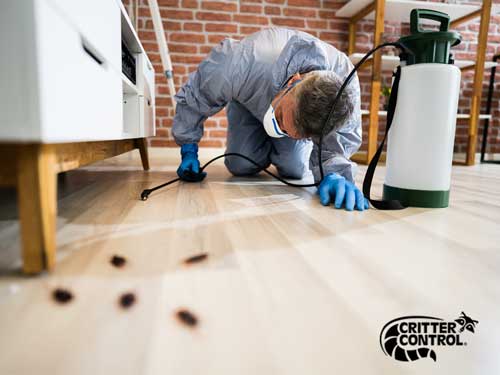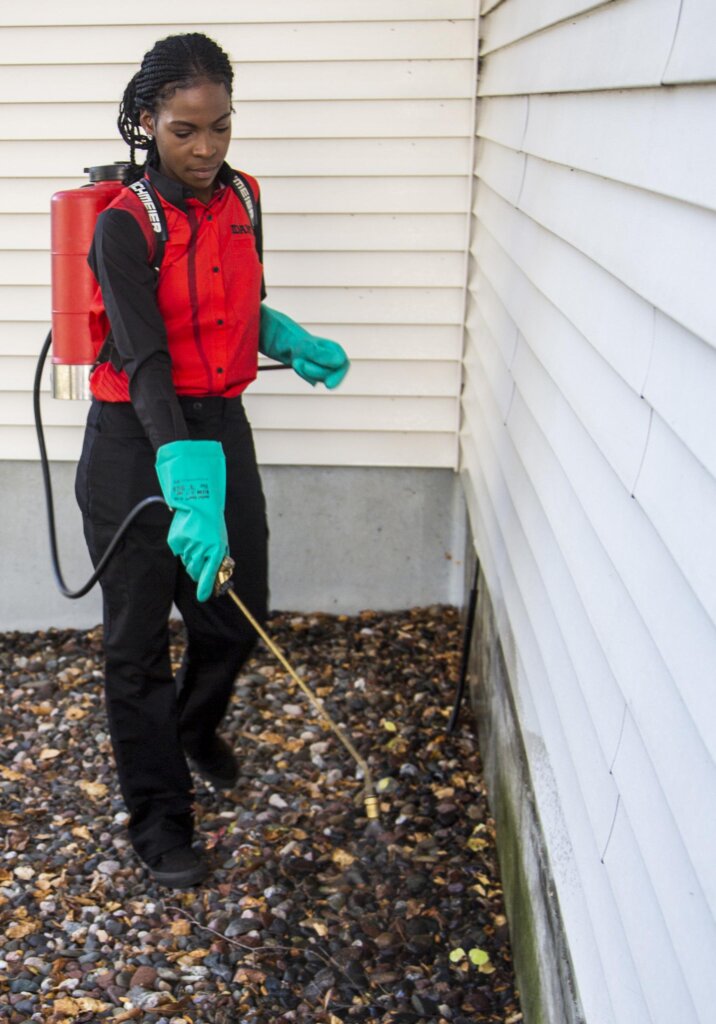Effective Pest Control Homestead Solutions to Protect Your Home
Effective Pest Control Homestead Solutions to Protect Your Home
Blog Article
Discover the Tricks of Pest Control: Exactly How It Works and Process Exposed
Parasite control is a meticulous practice that involves a deep understanding of pest habits, critical planning, and specific execution. From determining the origin creates of infestations to carrying out customized control measures, the process of parasite control is a mix of science and method intended at keeping a harmonious atmosphere.
Bug Behavior Comprehending
Comprehending the complex behaviors of bugs is vital for efficient pest control administration. The behavior of cockroaches, such as their preference for dark and moist environments, guides pest control specialists in figuring out where to concentrate treatment efforts.
By staying abreast of the most current research study on parasite actions, pest control specialists can continually fine-tune their approaches and remain in advance of developing parasite populaces. Inevitably, a deep understanding of parasite habits is a cornerstone of successful pest control management.

Evaluation and Recognition Approaches
Effective insect control administration depends greatly on precise assessment and specific recognition techniques to precisely analyze problems and establish targeted obliteration approaches. Evaluation includes a complete exam of the residential or commercial property to determine the level of the parasite trouble, determine the kind of bug present, and locate potential entry factors. This process may include visually examining common hiding places, making use of surveillance tools such as catches or cameras, and examining pest droppings or damage indicators.
Recognition is a crucial action that complies with evaluation, as different parasites need specific therapy techniques. Insect control professionals utilize their knowledge and knowledge of parasite habits to identify the species existing properly. This might entail checking out physical features, such as dimension, color, and markings, in addition to studying the parasite's habitats and behaviors. Sometimes, examples may be accumulated for additional evaluation in a laboratory to verify the pest types.
Bug Control Steps Implementation
Having actually meticulously examined and precisely recognized the insects present, the following critical step is the application of targeted pest control steps to efficiently remove the infestation. When the sort of pest has actually been identified, tailored methods are used to deal with the certain hazard. Usual parasite control methods include chemical treatments, biological controls, and physical barriers. Chemical treatments entail using chemicals to eliminate pests, while biological controls introduce natural predators to manage insect populations. Physical barriers such as securing entrance points or installing catches are also effective in protecting against pests from entering or spreading out within a residential property.
Proper implementation of bug control procedures requires experience to make sure the security of inhabitants and the setting. When applying chemicals and to utilize appropriate safety devices, it is critical to adhere to guidelines and guidelines. Tracking and follow-up inspections are vital to assess the efficiency of the chosen methods and make any kind of required changes. By employing targeted parasite control steps, problems can be successfully removed, creating a healthier and pest-free setting.
Ecological Effect Factors To Consider
Careful assessment of the potential environmental influence is a critical aspect when implementing insect control procedures. Insect control techniques can have different impacts on the atmosphere, including non-target types being impacted, contamination of dirt and water sources, and disturbance of the environment. It is vital to take into consideration these factors to minimize any kind of adverse effects on the environment.
To minimize ecological impacts, integrated pest monitoring (IPM) strategies are frequently advised. IPM concentrates on making use of a mix of methods such as biological control, habitat control, and the targeted use chemicals as a last hope. Pest Control Homestead. By utilizing a holistic strategy, IPM intends to control pests effectively while lessening harm to the setting

Recurring Tracking and Avoidance
Constant monitoring and avoidance play pivotal functions in keeping efficient parasite control methods over time. As soon as initial pest read review control procedures have been implemented, continuous surveillance becomes vital to track insect task levels and make sure that the chosen techniques are functioning effectively. Routine inspections by qualified experts enable the very early discovery of any kind of indications of pest revival, allowing speedy action to be taken before the invasion intensifies.
Preventive actions are just as critical in maintaining a pest-free atmosphere. Implementing techniques such as sealing access factors, keeping sanitation, proper waste management, and minimizing resources of food and water deny insects of the essentials they need to thrive. By proactively dealing with these elements, the probability of an insect infestation is substantially minimized.
Additionally, safety nets add to the long-term success of parasite control initiatives, decreasing the need for responsive therapies and associated expenses. By integrating ongoing monitoring and prevention right into a thorough parasite administration strategy, businesses and people can successfully safeguard their buildings against unwanted burglars.
Conclusion
To conclude, parasite control entails understanding bug actions, performing comprehensive inspections, implementing control steps, thinking about environmental effects, and maintaining recurring surveillance and avoidance. By adhering to these actions, insect invasions can be efficiently taken care of and managed. It is important to take a proactive technique to pest control to safeguard both human health and the setting.
By staying abreast of the most recent research study on insect behavior, bug control professionals can continually improve their methods and remain ahead of evolving bug populations.Having actually thoroughly evaluated and accurately determined the bugs present, the next critical action is the implementation of targeted bug control measures to successfully eradicate the use this link invasion.In addition, choosing ecologically friendly insect control items and approaches can significantly decrease the environmental impact of insect management practices - Pest Control Homestead. As soon as initial bug control measures have been applied, ongoing monitoring ends up being essential to track pest activity levels and make sure that the picked approaches are functioning effectively.In final thought, parasite Go Here control involves understanding bug behavior, performing extensive examinations, implementing control steps, thinking about ecological effects, and maintaining ongoing monitoring and prevention
Report this page